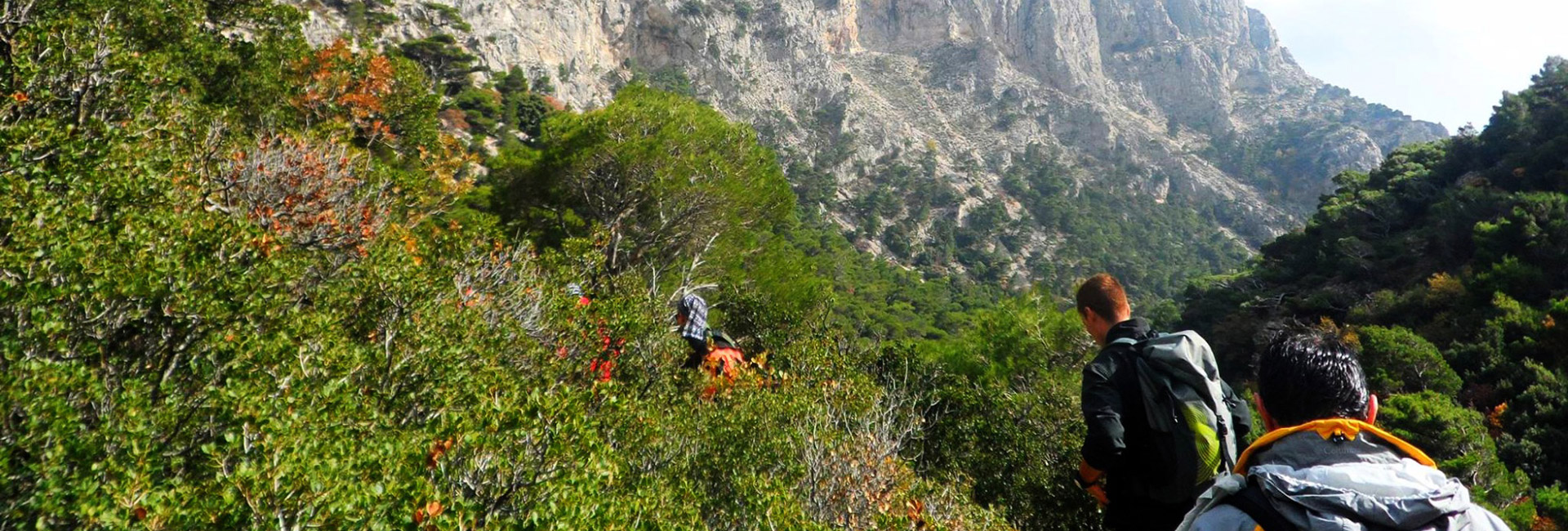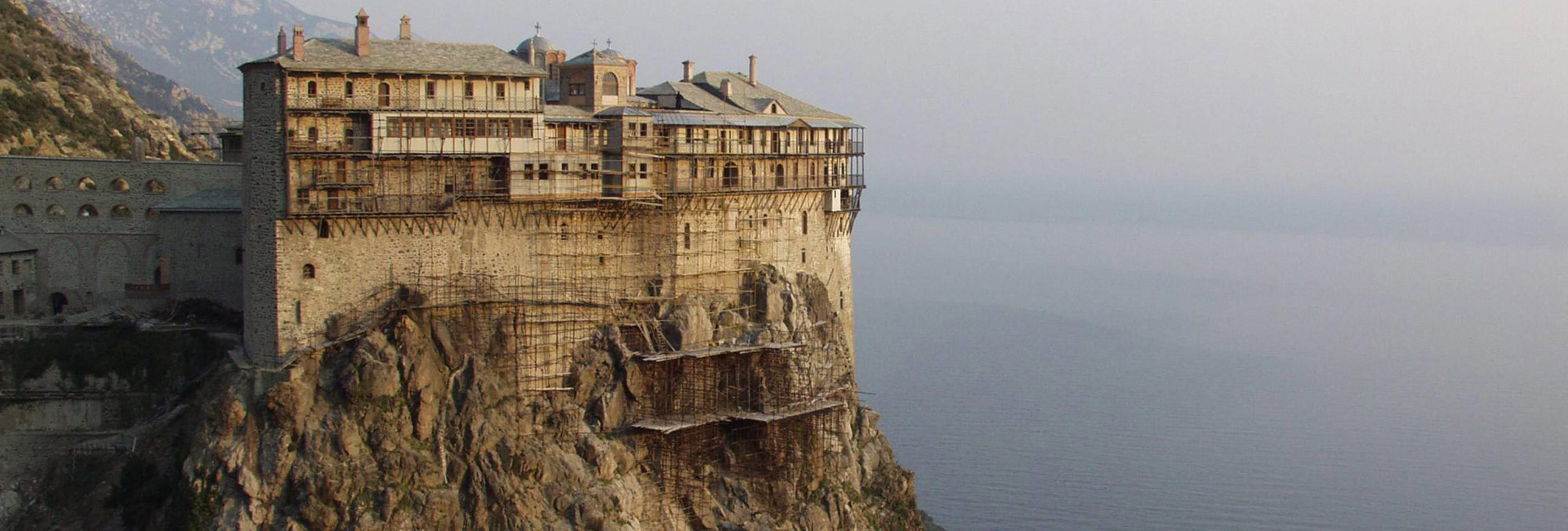Culture & History
Halkidiki looks back on a moving history which for thousands of years has affected and influenced the region’s rich tradition and culture. Below you will find a brief summary of Halkidiki’s role in Greek history.
Mythology: According to Greek Mythology Halkidiki was known in ancient times as “Flegra” (place of fire). The Olympic Gods, led by Zeus fought an epic battle here, against the children of Gaia (Mother Earth) and Uranus. This battle was known as the Gigantomaxia (Clash of the Giants).
Halkidiki’s first “finger” Kassandra got her name from Kassandros, King of Macedonia; Sithonia peninsula was named after Sithon, son of Poseidon, the Greek god of the sea. And Athos, the third peninsula got her name from the Giant Athos who fought threw a mountain on Zeus, which missed him and landed in the sea.
Prehistory: Archeological excavations in the cave of Petralona (approx. 40km from Istion Club) have shown that Halkidiki has been occupied 700.00 years ago by the prehistoric man “Archanthropos” (Archanthropus Europaeus Petraloniensis). A skull that was found in Petralona cave was dated on 200.000 years.
The first Colonies: During the younger pre-Christian history the first communities known to have lived in Halkidiki approx. 4000 BC were Pelasgians and Thracian.
The Pelineis from Peloponnese disembarked in Skioni on Kassadra at the end of the Trojan War to replenish their supplies. However, the captured Trojan women who were with them, set their entire fleet on fire and forced the Pelineis to stay in Skioni.
Halkidiki’s population increased significantly in the 8th century BC when a large number of settlers arrived from Halkida; hence the name Halkidiki.
Olynthos, the most important city during the 5th century BC, was conquered by the Persians when Halkidiki joined the Greeks in the Persian war. From 486 to 483 BC the Persian King Xerxes spent three years excavating a channel across the isthmus of Athos peninsula to allow the passage of his invasion fleet in 483 BC.
After the Persians were defeated by Greece in the battle of Salamina in 480 BC, Olynthos and Potidea led the people of Halkidiki to an uprising and drove the Persians away.
Aristotle and Alexander the Great: In 384 BC Aristotle was born in Stagira, a village in the near the Eastern coast of Halkidiki. Aristotle was a pupil of the great philosopher Plato and one of the best known and most influential philosophers of all time. After Plato's death Aristotle influenced many existing and established several new disciplines and subjects. These included Aesthetics, Biology, Ethics, Government, Linguistics, Logic, Metaphysics, Music, Physics, Poetry, Politics, Rhetoric, Theater, and Zoology. Aristotle is considered by many scholars as the first genuine scientist in history.
Between 356 and 323 BC Aristotle tutored Alexander the Great, the son of Philipp II, King of Macedonia; having access to an abundance of supplies, Aristotle established a library in the Lyceum which aided to the production of many of his hundreds of books. As head of the Royal Academy of Macedonia he tutored also two other future kings: Ptolemy and Kassandros.
In 348 BC Halkidiki became under Philipp of Macedonia part of his Kingdom. Later during the reign of Alexander the Great, new cities were founded in Halkidiki: Ouranoupolis, Kassandria and Antigonia.
Decline and Dissolution: In 168 BC Halkidiki became part of the Roman Empire. This started a long period of decline as the cities came under the control of Roman merchants. In the centuries that followed the Roman Empire blended into the Byzantine Empire.
In the 6th century AD Halkidiki suffered under attacks from the Huns. These were followed in later centuries by attacks from Catalans and Venetians respectively.
Efforts for Freedom: In 1430 AD the Turks invaded Halkidiki and took it over from the Venetians. Only a few decades later the Osmanic Empire covered the entire Greek territory. The Osmanic occupation of Greece lasted almost 400 years until the Independence war in 1821 AD, at which Halkidiki took also part. Halkidiki, however, was freed and joined the rest of Greece only after the Macedonian War in 1912.
New Beginnings: A new chapter dawned in the history of Halkidiki with the arrival of thousands of refugees from Asia Minor; about 30 new villages sprang into existence, including Nea Fokea, Nea Skioni, Nea Plagia and Nea Moudania.
Up to this day the influence of Greek-Macedonian roots is obvious and unmistakably found in every aspect of Halkidiki: the people and their traditions, their customs, culture, songs, and faith but also in the architecture the buildings.
Ancient Sites
The most important ancient sites in Halkidiki are the Park of Aristotle, and the ancient towns of Akanthos, Olynthos, Toroni and Stagira.
Religious Sites
Religion has always played an important role in Halkidiki. There are many sites worth exploring like the monastery “Zografou” near Nea Moudania, the monasteries of “The Annunciation of Theotokos” and “Saint Arsenios the Cappadocian” both located in Ormylia, of “Agios Prodromos” (St. John the Baptist) in Metamorfosi, and of “Agia Anastasia Farmakolytria” (Mountain Halkidiki), to name a few.
Mount Athos
However, most important among the religious sites are the monumental monasteries found on the Monastic Republic of Mount Athos, Halkidiki’s third peninsula, which has been a UNESCO World Heritage Site since 1988.
“Megisti Lavra” was founded in 963 AD by the byzantine monk Athanasios the Athonite and is the first, largest and most prominent of the 20 monasteries existing today. In the following years more great monasteries were established by monks from Bulgaria, Georgia, Romania, Russia and Serbia.
Several small communities of monks called Sketes also exist in Mount Athos. These are styled as small villages with Kalivia (huts) and Kellia (cells) that are situated around a main building. Some ascetic monks dwell in slopes of the mountain itself living in booths and caves (hermitages).
Mount Athos has a rich tradition in icon-painting which goes back to medieval times and is renowned for its numerous painters’ shops.
Approx. 2.000 monks live in the Monastic Republic and strictly follow a daily routine in accordance to the Julian calendar and Byzantine time. All monasteries close their gates at sunset and do not reopen them before sunrise. Before the first daylight the monastery bells call the monks to the morning prayers.
On a specific day each monastery holds a great celebration in honor of its titular Saint (Agios). The most important celebration is held on August 15th (Julian calendar August 28th) in honor of the Virgin Mary. Mount Athos’ dedication to the Virgin Mary is so strong that it is also known as the “Garden of the Virgin Mary” and no other woman is allowed to set foot on it.
The Holy Mountain is considered one of the major attractions in Northern Greece and definitely worth seeing.



















